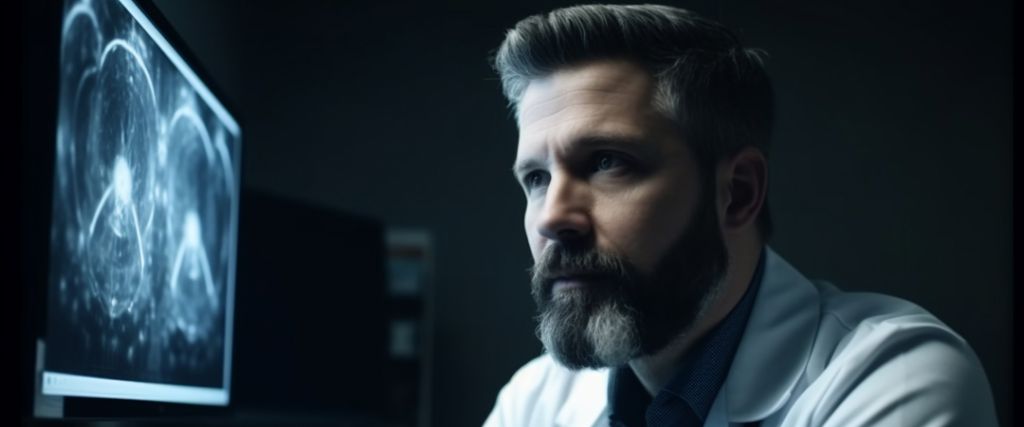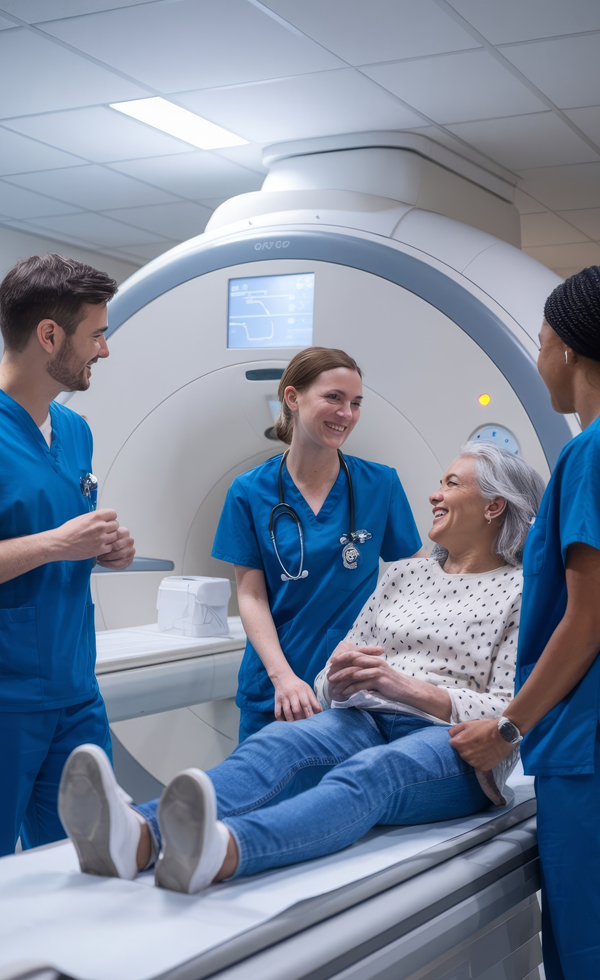
Early cancer detection can make all the difference in a patient’s treatment journey. In our comprehensive guide to the key tests for detecting this dreaded disease, we invite you to explore the various screening methods available today. What are the essential tests to know about? How can the results influence your health decisions? Through practical advice, we aim to highlight the importance of these screenings in your health routine. Whether you’re a patient, a loved one, or simply curious to learn more, this guide is designed to provide you with clear and accurate information. Get ready to discover the latest advancements in cancer screening and take charge of your health with confidence and peace of mind.
The Importance of Early Detection
Early cancer detection is critical, as it can significantly improve survival rates and the quality of life for patients. By identifying cancer at an early stage, it’s often possible to treat the disease before it progresses and becomes harder to manage. Treatments are generally less aggressive and more effective when cancer is caught early, reducing side effects and potential complications.
Additionally, early detection helps lower long-term healthcare costs. Treatments for advanced cancers are often more expensive and require more intensive medical resources. By identifying and treating cancer at an early stage, healthcare systems can save on complex treatments and prolonged hospital stays. This also enables patients to return to normal life more quickly, reducing the financial impact on families and society.
Moreover, early detection plays a vital role in raising health awareness. It encourages individuals to take charge of their well-being and adopt preventive behaviours. Regular screening helps people become more aware of cancer risks and the steps they can take to reduce those risks, such as quitting smoking, eating a balanced diet, and exercising regularly.
Different Types of Screening Tests
There are various cancer screening tests, each designed to detect specific types of the disease. The main types of tests include imaging tests, blood tests, and physical examinations. Imaging tests, such as mammograms, CT scans, and MRIs, allow doctors to visualise the inside of the body and identify suspicious abnormalities. These tests are crucial for detecting tumours early and assessing their location and size.
Blood tests are also commonly used to screen for cancer. Some cancers release specific substances into the blood, known as tumour markers, which can be detected through blood analysis. For example, the PSA (Prostate-Specific Antigen) test is used to screen for prostate cancer, while the CA-125 test can help detect ovarian cancer. These tests are often combined with other screening methods to provide a more complete diagnosis.
Finally, physical examinations and biopsies play a crucial role in cancer screening. Physical exams allow doctors to feel and inspect areas of the body where tumours may develop. Biopsies involve collecting a sample of suspicious tissue for microscopic analysis. This method is often used to confirm a cancer diagnosis and determine the exact type of cancer cells present.
Breast Cancer Screening Tests
Breast cancer is one of the most common cancers among women, and regular screening is essential to detect the disease at an early stage. Mammography is the most widely used screening test for breast cancer. It involves taking X-ray images of the breasts to identify tumours or abnormalities that may not yet be palpable. Screening mammograms are generally recommended every two years for women aged 50 to 74, although other age groups may also benefit from regular screenings depending on their risk factors.
In addition to mammograms, breast ultrasound can be used to supplement breast cancer screening, particularly in women with dense breast tissue. Ultrasound uses sound waves to create images of breast tissue and can help distinguish between benign and malignant tumours. This test is often used when abnormalities are detected during a mammogram or for women at higher risk of breast cancer.
Breast MRI is another screening method primarily used for women at high risk of breast cancer, such as those with a strong family history of the disease or BRCA1 or BRCA2 genetic mutations. MRI uses magnetic fields and radio waves to create detailed images of the breasts. While more expensive and less commonly used than mammography, MRI can be highly effective in detecting breast cancers that may not be visible through other methods.

Colorectal Cancer Screenings
Colorectal cancer is another common form of cancer, and regular screening is essential for preventing or detecting it at an early stage. Colonoscopy is the benchmark examination for colorectal cancer screening. This examination allows doctors to view the inside of the colon and rectum using a flexible endoscope. A colonoscopy can not only detect pre-cancerous polyps and tumours but also allows for their immediate removal, thereby reducing the risk of progression to invasive cancer.
In addition to colonoscopy, the faecal immunochemical test (FIT) is a non-invasive method used to detect traces of blood in stool, which can be a sign of colorectal cancer. FIT is recommended annually for adults aged 50 to 74 and can be performed at home. If positive results are obtained, a colonoscopy will generally be recommended for further diagnosis.
The faecal DNA test is another non-invasive screening option that analyses stool samples to detect specific genetic mutations associated with colorectal cancer. This test is more sensitive than FIT and can be performed every three years for individuals at average risk. As with FIT, a positive result requires a follow-up colonoscopy to confirm the diagnosis and allow for early intervention.
Lung Cancer Screenings
Lung cancer is one of the leading causes of cancer death worldwide, but screening can help detect the disease at an early stage, especially in high-risk individuals. Low-dose thoracic computed tomography (CT) is the recommended screening examination for lung cancer. This examination uses X-rays to create detailed images of the lungs and can detect small lung nodules before they cause symptoms.
Low-dose CT screening is generally recommended for current or former smokers aged 55 to 74 with a significant smoking history. This annual examination can reduce the risk of mortality from lung cancer by allowing early detection and rapid treatment. However, it is important to discuss the risks and benefits of screening with a healthcare professional, as the CT scan can also detect benign abnormalities that require additional testing.
In addition to CT, it is essential to maintain an open dialogue with your doctor about the symptoms and risk factors for lung cancer. Regular physical examinations and detailed medical history can help identify high-risk individuals who might benefit from more frequent screenings. Quitting smoking remains the best prevention against lung cancer, but screening also plays a crucial role in reducing mortality associated with this disease.
Prostate Cancer Screenings
Prostate cancer is one of the most common cancers in men, and screening can help detect the disease at an early stage. The prostate-specific antigen (PSA) test is the most commonly used screening test for prostate cancer. PSA is a protein produced by the prostate, and high levels in the blood can indicate the presence of cancer. However, high PSA levels can also be caused by benign conditions, such as benign prostatic hyperplasia or infections, which necessitates further evaluation.
In addition to the PSA test, the digital rectal examination (DRE) is another screening tool used to detect prostate cancer. During this examination, the doctor inserts a gloved and lubricated finger into the rectum to feel the prostate and check for abnormalities. Although less sensitive than PSA, DRE can detect tumours located near the rectal wall and provide additional information about prostate health.
For men at high risk of prostate cancer, such as those with significant family history or belonging to certain ethnic populations, more frequent screenings may be recommended. It is crucial to discuss the benefits and drawbacks of screening with a healthcare professional, as screening can lead to overdiagnosis and unnecessary treatments. A personalised approach based on individual risk factors is often the best strategy for prostate cancer screening.
Practical advice for preparing for screening tests
Preparing for cancer screening tests can sometimes be a source of stress and anxiety, but there are several steps you can take to ensure the process goes as smoothly as possible. Firstly, it’s important to fully understand the type of test you’re going to have and what it involves. Find out about the procedures, how long the test will take, and any potential side effects or discomfort. Talking to your doctor or a healthcare professional can help you get accurate information and clarify any concerns.
Next, follow any specific instructions provided by your doctor or the screening centre. Some tests, like a colonoscopy, require special preparation, such as fasting or taking laxatives to cleanse the colon. Make sure you understand and follow these instructions carefully to ensure accurate results. For other tests, such as blood tests, you may need to avoid certain foods or medications beforehand.
Finally, look after your emotional well-being before and after the test. It’s natural to feel anxious in the run-up to a screening, especially if you have a family history of cancer or other risk factors. Practising relaxation techniques, such as deep breathing, meditation, or yoga, can help reduce stress. Talk to friends, family members, or a counsellor for emotional support. After the test, take the time to rest and relax, and don’t hesitate to ask your doctor any questions about the results.


Recommended Screening Frequency by Age and Sex
The frequency of cancer screenings varies depending on age, sex, and individual risk factors. For breast cancer, for example, it is generally recommended that women aged 50 to 74 undergo a mammogram every two years. However, women at high risk, such as those with a family history of breast cancer, may require more frequent screenings or start at a younger age. It is important to discuss this with your doctor to develop a personalised screening plan.
For colorectal cancer, adults aged 50 to 74 are generally advised to have a FIT test annually or a colonoscopy every ten years. Individuals with a family history of colorectal cancer or pre-existing conditions, such as familial adenomatous polyposis, may require more frequent screenings and start at an earlier age. Again, consultation with a healthcare professional is essential to determine the appropriate frequency of screenings.
Regarding prostate cancer, recommendations vary based on risk factors. Men aged 50 and over are encouraged to discuss the benefits and risks of PSA and DRE screening with their doctor. For high-risk men, such as those with a family history or belonging to high-risk ethnic groups, screening may begin as early as 40 or 45 years of age. A personalised approach, taking into account individual risks and preferences, is often the best strategy.
Conclusion and Additional Resources
In conclusion, early cancer screening is a powerful tool for improving survival rates and the quality of life for patients. By understanding the various types of screening tests available, such as mammograms, colonoscopies, PSA tests, and chest CT scans, and by following frequency recommendations tailored to your age and risk factors, you can take proactive steps to protect your health. Remember the importance of preparing properly for these tests and taking care of your emotional well-being throughout the process.
For those looking to learn more about cancer screening tests and available resources, here are some additional sources that may be helpful. Websites of reputable health organisations, such as the National Cancer Institute (NCI), Cancer Research UK, and the American Cancer Society, provide detailed information on different types of cancer, screening options, and prevention tips. Additionally, speaking with your doctor or a healthcare professional is always a good idea for personalised advice and answers to your specific questions.
Finally, remember that prevention and screening are key components of good health. By adopting a healthy lifestyle, staying informed about cancer risks, and regularly participating in recommended screenings, you can help reduce your risk of cancer and detect the disease at an early stage. Take charge of your health with confidence and peace of mind, and don’t hesitate to use the resources available to support you on your journey.

